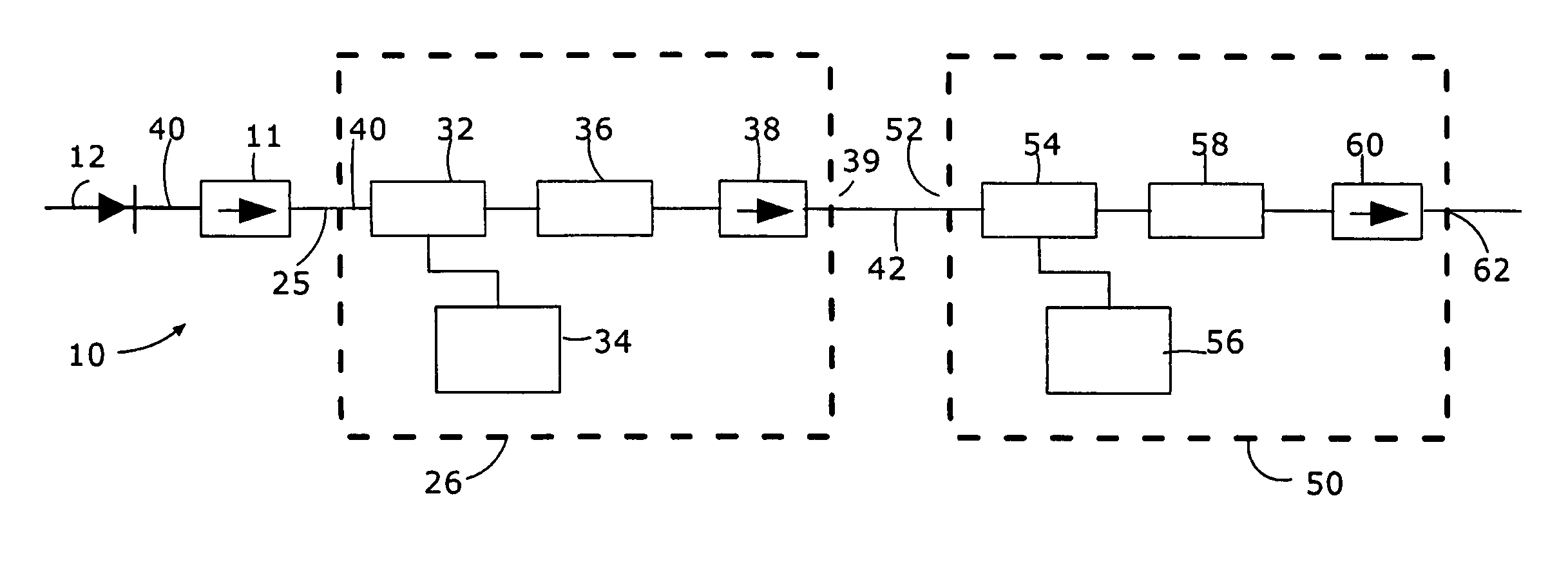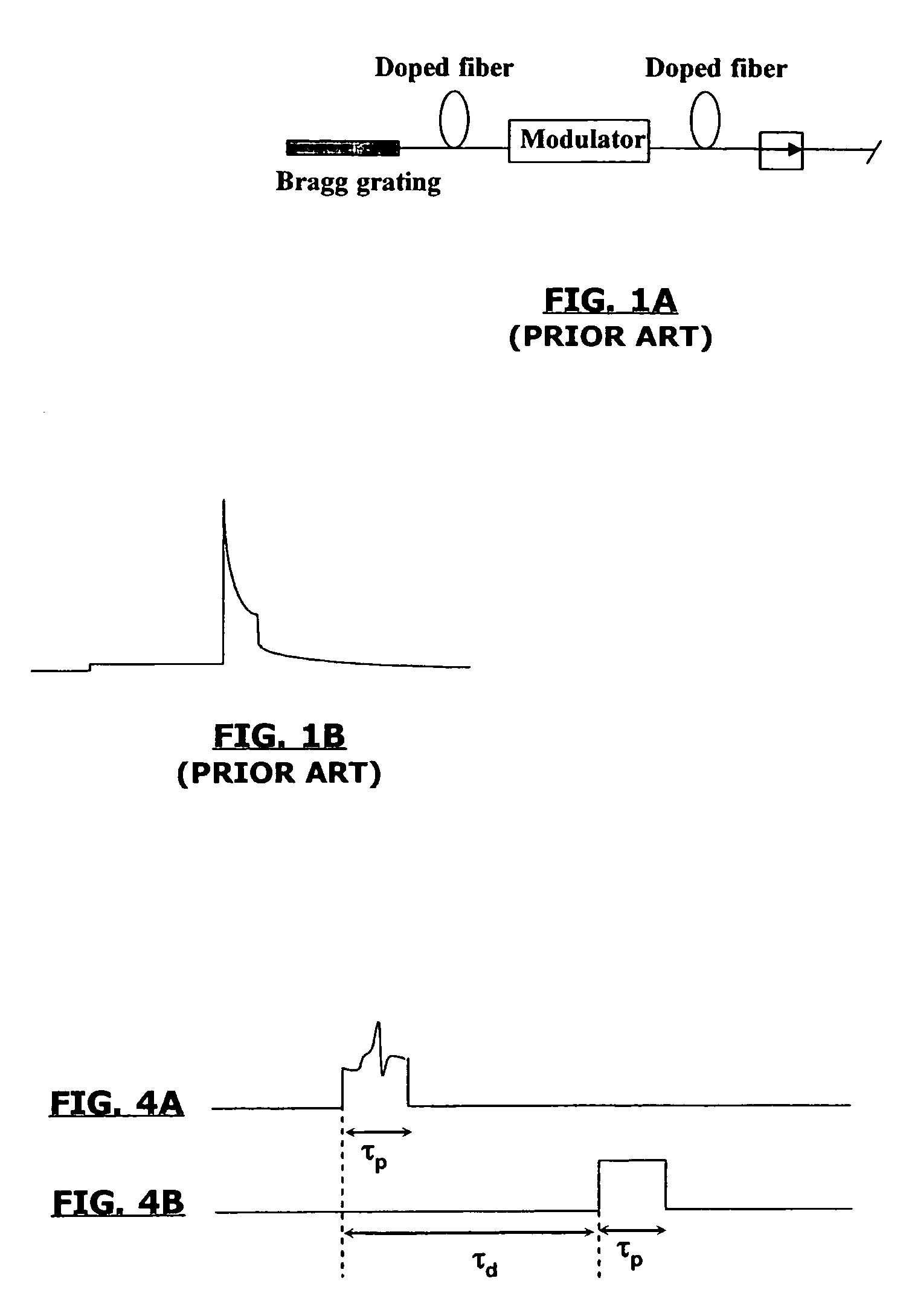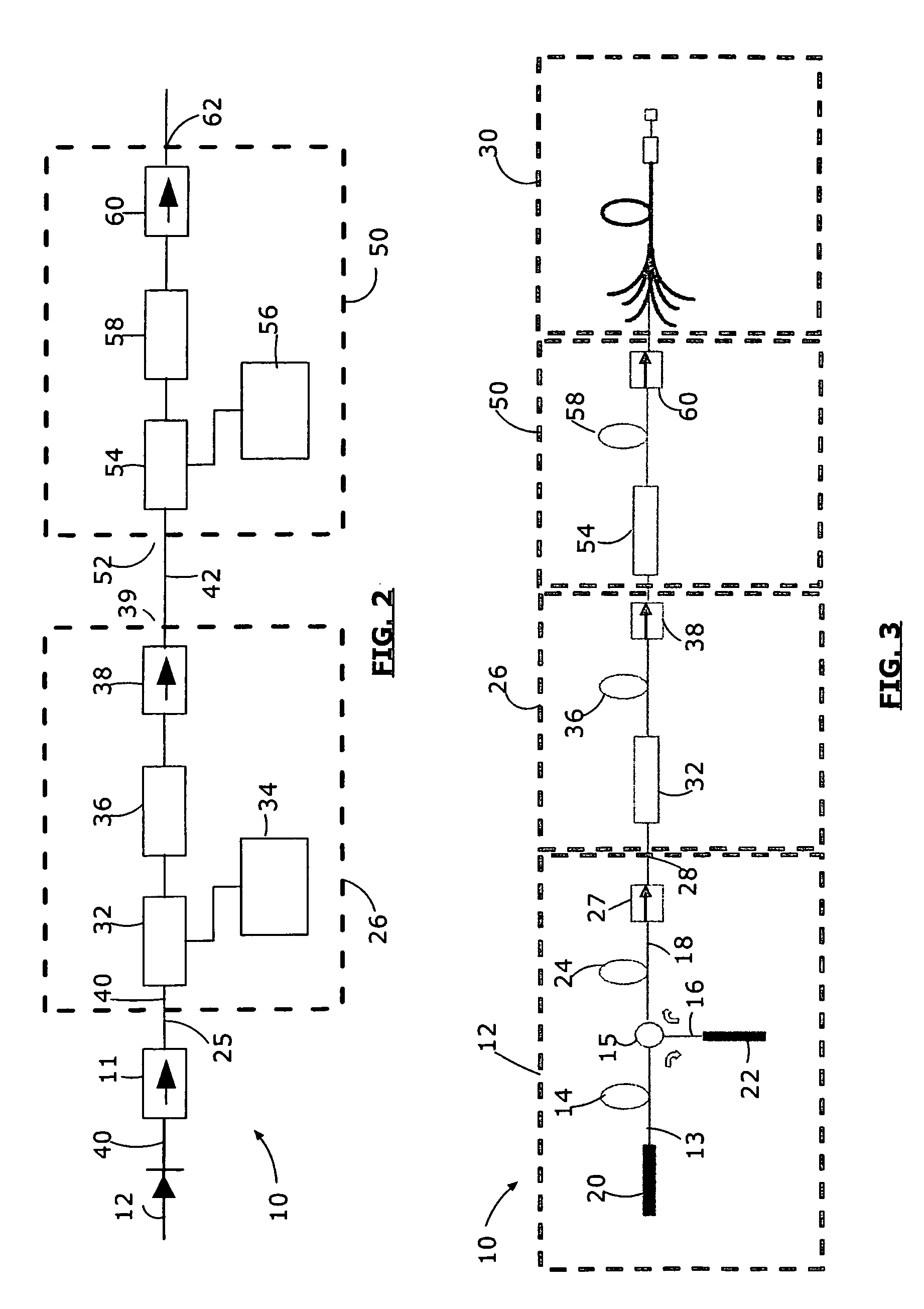Pulsed laser light source
a laser light source and pulse technology, applied in lasers, laser details, electrical equipment, etc., can solve the problems of relatively large peak power, low repetition rate, and inability to directly adjust the pulsewidth
- Summary
- Abstract
- Description
- Claims
- Application Information
AI Technical Summary
Benefits of technology
Problems solved by technology
Method used
Image
Examples
Embodiment Construction
[0017] Referring to FIG. 2, there is shown a pulsed laser light source according to a preferred embodiment of the invention.
[0018] The pulsed laser source 10 first includes a continuous wave (CW) light source 12 generating a continuous light beam 40. In the embodiment of FIG. 2, the CW light source is a laser diode, but any other light source generating an appropriate continuous beam could be considered, such as for example a superfluorescent source (see description of FIG. 3 below), a CW fiber laser or a fiber coupled CW bulk solid-state laser source. The continuous light beam 40 preferably has a spectral shape which will determine the spectral shape of the light outputted by the entire pulsed light source 10. Advantageously, the laser diode may be selected or replaced depending on the required spectral profile of the outputted light. Alternatively, a wavelength tunable source may be used. Additional components may optionally be provided downstream the laser diode to modify its sp...
PUM
 Login to View More
Login to View More Abstract
Description
Claims
Application Information
 Login to View More
Login to View More - R&D
- Intellectual Property
- Life Sciences
- Materials
- Tech Scout
- Unparalleled Data Quality
- Higher Quality Content
- 60% Fewer Hallucinations
Browse by: Latest US Patents, China's latest patents, Technical Efficacy Thesaurus, Application Domain, Technology Topic, Popular Technical Reports.
© 2025 PatSnap. All rights reserved.Legal|Privacy policy|Modern Slavery Act Transparency Statement|Sitemap|About US| Contact US: help@patsnap.com



